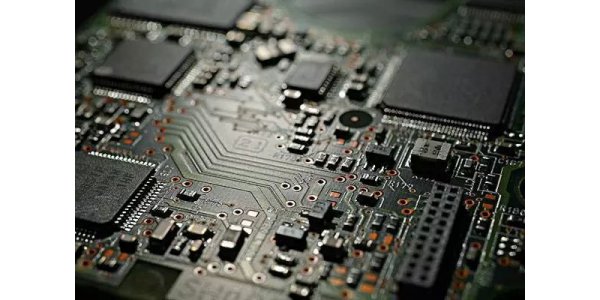Inspection is a product-centric activity, while monitoring is a process-centric activity. Both are needed for a quality plan, but the long-term goals should be less product inspection and more process monitoring. Product inspection is passive (defects have occurred), while process monitoring is active (defects can be prevented). Obviously, prevention is more valuable than reactive reaction to existing defects.
Inspection is actually a screening process because it attempts to find unacceptable products for repair. Extensive inspections do not necessarily improve or guarantee product quality. A robust process should focus on establishing stable, repeatable, and statistically-monitored process goals rather than large-scale inspections. Inspection is a subjective activity, and even with considerable training, it can be a difficult task. In many cases, you can call a team of inspectors to evaluate a welding joint, but get several different opinions.
Operator fatigue is the reason why 100% inspections usually do not find every manufacturing defect. In addition, this is a costly and value-added operation. It rarely achieves the desired goals of higher product quality and customer satisfaction.
An inspector usually sits at the end of the assembly line and inspects the product. In an ideal scenario, process monitoring activities are a balance between product inspection and process monitoring. For example, confirming that the correct process parameters are being used, measuring machine performance, and establishing and analyzing control charts. Process monitoring assumes a leading role in these activities; they help machine operators accomplish these tasks. Training is a key factor. Process monitors and machine operators must understand process standards (eg, IPC-A-610), concepts of process monitoring, and related tools (eg, control charts, Pareto charts, etc.). Process monitors in circuit board manufacturers also improve product quality and process monitoring. As a key member of the manufacturing team, monitors encourage a method of defect prevention rather than a method of finding and repairing.

Another term we should avoid is touch-up. Because any form of rework and repair should be seen as undesirable.
For most companies, manual inspections are the first line of defense. Inspectors use a variety of magnification tools to get closer to components and solder joints. IPC-A-610 establishes some basic magnification guidelines based on the pad width of the inspection component. The main reason for these guidelines is to avoid over-checking due to over-magnification.
The most common inspection tool is a microscope with a magnification range of 10-40X. However, fatigue caused by continuous use of the microscope often leads to over-examination, as the magnification usually exceeds the guidelines of IPC-A-610.
Automation is wonderful; in many cases, it is more accurate, faster, and more efficient than an inspector. But it can be quite expensive, depending on how complicated it is. Automated inspection equipment may dilute human consciousness and give people the illusion of safety.
1. Solder paste inspection.
Solder paste printing is a complex process that can easily deviate from the desired result. A clearly defined and properly implemented process monitoring strategy is needed to keep the process under control. At least check the coverage area and measure thickness manually, but it is best to use automated coverage, thickness, and volume measurements. Use X-bar R chart to record the results.
2. Inspection of glue.
Glue dispensing is another complex process that can easily deviate from the desired result. As with solder paste printing, a clearly defined and properly implemented process monitoring strategy is required to keep the process under control. It is recommended to manually check the dot diameter. Use X-bar R chart to record the results.
Before and after a dispensing cycle, it is a good idea to drop at least two isolated spots on the board to represent the diameter of each spot. This allows the operator to compare the dot quality during the dispensing cycle. These points can also be used to measure the dot diameter. Glue point inspection tools are relatively inexpensive and basically have portable or bench-top measuring microscopes.
3. Confirmation of first-article.
A detailed inspection of the first board coming down from the assembly line is usually performed to verify the machine's settings. This method is slow, passive, and not accurate enough. It is common to have a complex board containing at least 1,000 components, many without markings (values, part numbers, etc.). This makes inspection difficult. Verifying machine settings (components, machine parameters, etc.) is a positive approach. AOI can be effectively used for the inspection of the first board. Some hardware and software vendors also provide feeder setting confirmation software.
Coordinating the validation of machine settings is an ideal role for a process monitor who helps guide machine operators through the production line with the help of a checklist. In addition to verifying the feeder settings, the process monitor should carefully inspect the first two boards using existing tools. After reflow soldering, process monitors should perform a quick but detailed inspection of key components (close-pitch components, BGA, polar capacitors, etc.). Meanwhile, the production line continued to assemble the boards. To reduce downtime, the production line should be full of boards before the reflow while the process monitor inspects the first two boards after the reflow. This can be a bit dangerous, but you can gain the confidence to do so by verifying the machine settings.
4. X-ray inspection.
X-rays are very good at checking welding shorts, but they are less effective at finding welding open circuits.
5. Automatic Optical Inspection (AOI).
A good process monitoring strategy should include overlapping tools such as in-circuit testing (ICT), optical inspection, functional testing, and visual inspection. These processes overlap and complement each other, and neither can provide sufficient coverage alone.
Two-dimensional (2-D) AOI machines can check for missing components, misalignment, incorrect part numbers and polarity reversals. In addition, three-dimensional (3-D) machines can evaluate the quality of solder joints.
